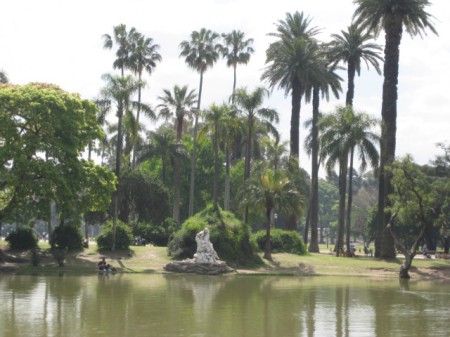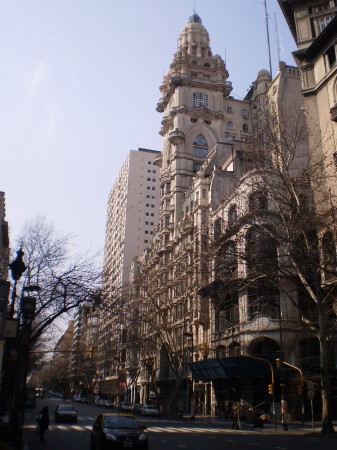It’s a Date – the Calendar as Place Name
Being a bit of a geography nerd, one of the things I tend to notice when I travel is street names. In France it seems that every other street or avenue is named after a National Hero (Jean Jaurès is a particular favourite). New York uses numbers and Washington DC has letters. Towns in Colombia have a bloody confusing block system – I spent 4 months in the country and never really got the hang of it – the Bogotá tourist brochure explains their system thus:
Moving around Bogota is easy. The two mountains Monserrate and Guadalupe are the reference point. The carreras (KR) run parallel to the mountains North-South, and numbers increase from East to West. The calles (CL) are perpendicular to the mountains, and numbers increase from South-North. A transversal (TR) is similar to a carrera, and a diagonal (DG) is similar to a calle. The avendias are denominated (AK) when the correspond to a carrera, and (AC) when they a correspond to a calle. The avenidas also can be distinguished by a name, for example: Avenida Cuidad de Quito.
So, compared to that, Buenos Aires is relatively straighforward and uses regular names. Again, lots of National Heroes, San Martin, Borges, Sarmiento and friends feature heavily, even Jean Jaurès gets a look in. There is one little quirk however that I had not come across a lot, that is the use of dates as street, avenue and park names. Occasionally I’ll find myself wandering down a date and wondering what happened on that day to make it worthy of remembering.
So, I have put a little guide together of the dates you might come across on the streets of Buenos Aires, and what they mean.
3 de Febrero
What happened? In 1852, at the Battle of Caseros, the then Governor of Buenos Aires Juan Manuel de Rosas was beaten by the forces of the Great Army under Justo José de Urquiza.
Why does it matter? Since his defeat Rosas has been painted as a tyrant and soon after his being deposed Urquiza formed a National Confederation and drafted the first Argentinian Constitution. It being largely a Buenos Aires affair, 3rd February is not a national holiday.
Where is it remembered? The official name for the Bosques de Palermo, a large expanse of greens, lakes and gardens to the east of Palermo is el Parque 3 de Febrero – the land being the former residence of none other that Señor de Rosas himself. Aside from the park there is also a 3 de Febrero street in Belgrano.
1 de Marzo 1948
What happened? On this date in 1948, the Argentine railways were nationalised.
Why does it matter? Good question, but back in 1948 the English and French-owned rail system was seen by the President Peron as indicative of the unhealthy influence of foreign interests in Argentina. Nationalisation was seen as a step towards more self-determination. By the 1950s however the crippling debts of the rail system contributed to numerous economic crises from the 1950s through to the 1980s.
Where is it remembered? In a small square in Saavedra in northwest Buenos Aires, la Plaza de 1 Marzo de 1948.
2 de Abril de 1982
What happened? Well, I wasn’t expecting this one. On the 2nd April 1982, Argentine forces invaded las Malvinas, or Falkland Islands. The Argentines surrendered to British forces on the 14th June 1982 after a conflict that cost the lives of 257 British and 649 Argentine soldiers, sailors, and airmen. April 2nd remains a national holiday – the Day of the Veteran and Fallen in the Falklands War.
Why does it matter? Las Malvinas remain a very emotional subject in Argentina, at least officially. The average Argentine has little interest in the place, and holds no grudge towards any Englishman he meets however, politically the perceived theft of the islands by the British in 1833 is the cornerstone of Argentine foreign policy. The claim to the islands is part of the Constitution and it is illegal to produce a map of Argentina without claiming the Falklands as part of Argentina. Literary legend José Luis Borges described the 1982 war as “two bald men fighting over a comb”.
Where is it remembered? In the 6 block long Calle 2 de Abril de 1982 in Villa Lugano, southwest Buenos Aires.
1 de Mayo
What happened? International Workers Day
Where is it remembered? 2 blocks in Villa Pompeya, Calle 1 de Mayo & Plaza de 1 de Mayo between Hipolito Yrigoyen & Alfonso Alsina in Congreso.
25 Mayo
What happened? In 1810 the events of the week beginning on the 18th May, culminated on the 25th with the Spanish Viceroy being desposed and a local goverment, la Primera Junta being declared.
Why does it matter? It was the starting point of Argentina’s War of Independence which resulted in independence being proclaimed 6 years later. The Bicentenary was celebrated this year.
Where is it remembered? In 3 places, the Avenida de Mayo, one of the grandest avenues in Buenos Aires leading from the National Congress to the Plaza de Mayo – the first square in Buenos Aires. One of the streets leading from the square is called 25 de Mayo.
5 Julio
What happened? In 1811 Venezuela declared independence from Spain.
Why does it matter? No direct importance to Argentina as far as I can see – an important date in South America history however.
Where is it remembered? A one block alley leading off, appropriately enough, Calle Venezuela in Montserrat.
9 Julio
What happened? In 1816 Argentina declared independence from Spain at the Congreso de Tucumán.
Why does it matter? The birth of a great nation
Where is it remembered? The main avenue of Buenos Aires, Avenida 9 de Julio – said to be the widest in the world with up to 7 lanes each way and another 4 if you count the streets that run alongside it. It’s home to the Teatro Colon and the Obelisco.
11 September
What happened? The death, in 1888, of Domingo Faustino Sarmiento, the 7th President of Argentina (1868 – 1874)
Why does it matter? An intellectual, Sarmiento is remembered today as a great social innovator who did great work in promoting education and literature in Argentina and South America.
Where is it remembered? Belgrano has a calle 11 de Septiembre and Plaza Miserere is better known as Plaza Once, as it is next to the Estacion Once de Septiembre, the terminus of the Sarmiento railway. The square is also home to the mausoleum and ashes of Bernardo Rivadavia, the first constitutional president of Argentina. Update: Whilst Sarmiento did die on the 11th September it looks like I’m totally wrong about why Once is Once. It seems that the Province of Buenos Aires rebelled against the Federal State on the 11th September 1852 (protesting against rules imposed by Urquiza after the Battle of Caseros) and actually became an independent state for all of 10 days. Heady times indeed. Anyway, apologies, and thanks to 91 Days for pointing me in the right direction.
12 Octubre
What happened? Colombus Day, Dia de la Raza, Día de la Diversidad Cultural Americana
Why does it matter? Celebrated differently in different countries, it marks Colombus’ arrival in the Americas in 1492. Latin American countries call it Dia de la Raza (Day of the Race) marking the first meeting between Europeans and Native Americans. Since 2007 Argentina celebrates the day of American Culture Diversity.
Where is it remembered? A 3 block street in Villa Crespo. It’s also a public holiday.
15 Noviembre 1889
What happened? Brazil declared a republic.
Where is it remembered? Calle 15 de Noviembre de 1889 in Constitucion.







No Comments